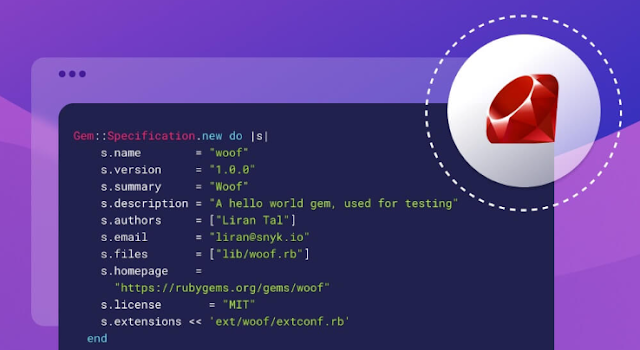- Home
- About me
- Online Training
- Categories
- _System Admin
- __Linux
- __Windows
- _Networking
- __Cisco Networking
- __Juniper Networking
- _Network Security
- __Cisco Security
- __Check Point Security
- __Fortinet Security
- __Palo Alto Security
- __Juniper Security
- _Network Automation
- __Cisco Automation
- __Junipar Automation
- _Cybersecurity
- __Deffencive Security
- __Offensive Security
- __Digital Forensics
- _Virtualization
- __VMware
- _Cloud Computing
- __Amazon Web Services
- __Google Cloud
- __Microsoft Azure
- _Cloud Security
- __Google Cloud Security
- __AWS Cloud Security
- __Azure Cloud Security
- _Python Coding
- __Python Tutorial
- __Python Projects
- News
- Contact Me
GemGuard: Securing the RubyGems Ecosystem Against CVE-2022-29176
November 27, 2023
Introduction:
The RubyGems community recently faced a potential security threat with the discovery of CVE-2022-29176, a vulnerability that could have allowed attackers to replace gems with malicious versions. In this blog post, we delve into the details of the vulnerability, RubyGems' swift response, and the broader implications for package managers in the ever-evolving landscape of cybersecurity.
Understanding CVE-2022-29176:
The vulnerability, identified as CVE-2022-29176, was rooted in a bug within the yank action of RubyGems, used to remove gems from the RubyGems.org repository. This flaw could have enabled any RubyGems.org user to yank and replace specific gems, even without the necessary permissions. The issue primarily affected gems with dashes in their names, creating a potential avenue for attackers to exploit the naming convention.
Conditions for Exploitation:
To exploit the vulnerability, an attacker needed to meet specific conditions. The target gem had to have one or more dashes in its name, and the prefix before the dash had to match the name of a gem owned by the attacker. Additionally, the target gem had to be created within the last 30 days or not updated for more than 100 days. This intricate set of conditions added a layer of complexity to the potential exploit.
RubyGems' Response and Mitigation:
RubyGems acted swiftly to address the vulnerability by changing the regular expression that validates gem versions, preventing backtracking that could lead to denial of service. Despite the seriousness of the issue, RubyGems reported that they found no evidence of malicious exploitation and received no reports from gem owners about unauthorized yanking.
Ongoing Investigation and Community Collaboration:
RubyGems remains vigilant, continuing to investigate the issue and pledging to take further actions if needed. The community is encouraged to participate in the collective effort to maintain the integrity and security of the RubyGems ecosystem. Gem owners are advised to check their gems for any suspicious changes and promptly report any issues to security@rubygems.org.
Comparisons with NPM and Lessons Learned:
The incident with RubyGems draws parallels with recent security issues faced by NPM, emphasizing the broader challenges in securing package managers. The comparison sheds light on the necessity for continuous vigilance and proactive measures to address potential vulnerabilities and attacks across different ecosystems.
Conclusion:
The swift response and mitigation efforts by RubyGems underscore the commitment to the security of the RubyGems ecosystem. This incident serves as a reminder for developers and maintainers across all package managers to remain proactive in their security practices, conduct regular audits, and collaborate with the community to ensure the ongoing safety of software dependencies. GemGuard is a testament to the resilience of the RubyGems community in the face of evolving cybersecurity threats.
Featured Post
 Networking
Networking
Basic Cisco IOS Divice Configuration Step by Step.
December 28, 2023
Categories
Subscribe Us
Sub-Categories
Donate ETH / BNB / TETHER










0 Comments